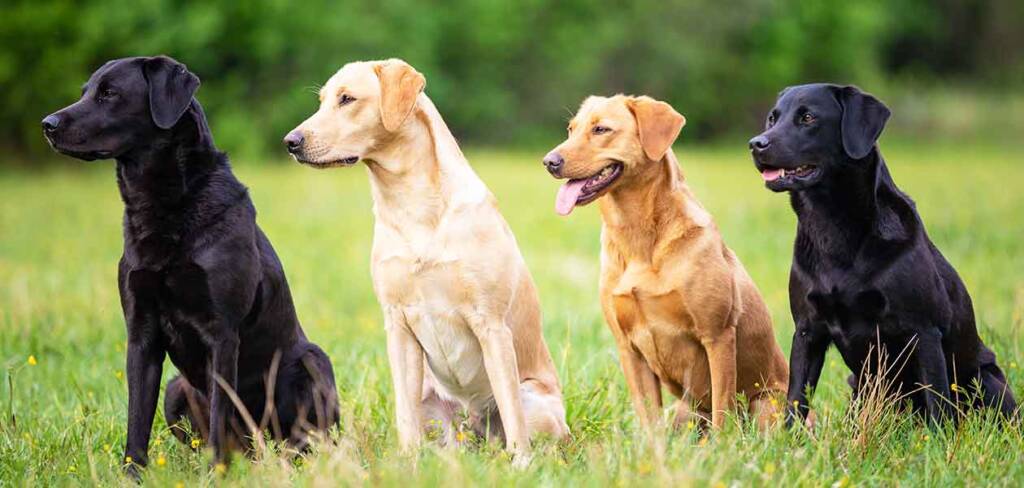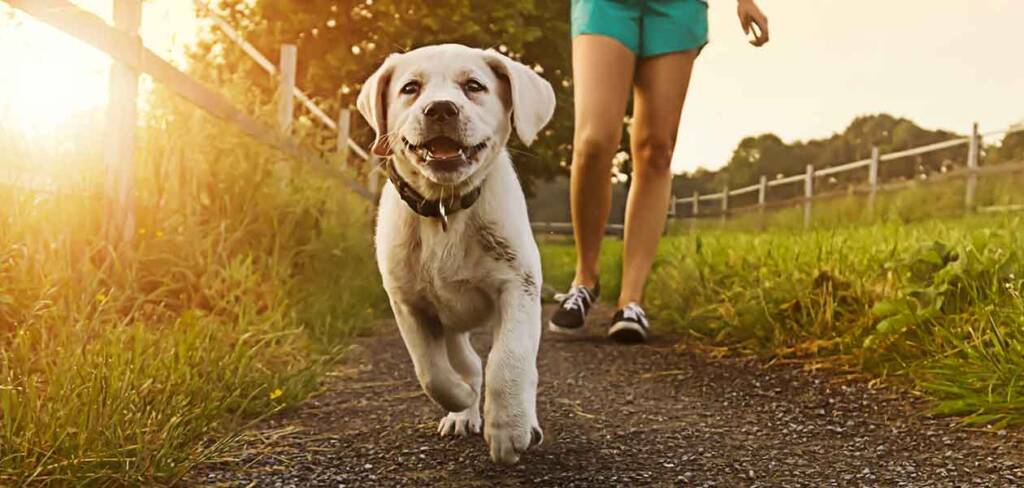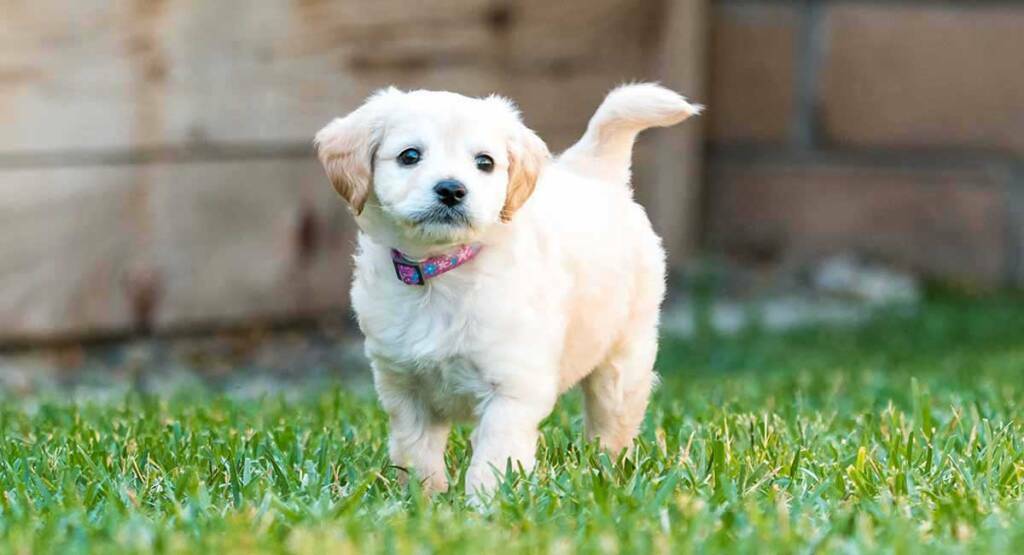Follow these Top 10 Tips For Dog Training so you can achieve success. Teaching your canine companion to sit, stay, and come is only the beginning of dog training. The next step is to teach him how to navigate the human world. Dog training keeps them safe, provides them with much-needed mental stimulation, and gives them a purpose. Do you remember the proud look on a dog’s face when he successfully performed a trick? Training sessions are also a great way to strengthen the bond between you and your pet. If you have a puppy or an adult dog, you should begin training him from the moment you bring him home. You can raise a happy, well-behaved dog by following these ten key training tips.
1. Make sure your dog is in good health
If your dog is not feeling well, his behavior may be affected, but training will not work in this case. Maintain your dog’s health by feeding him a high-quality diet, providing him with regular exercise and play, and allowing him enough rest and quiet time. Does your dog receive regular veterinary care? Before you implement a training program, consult your veterinarian if you notice a sudden change in his behavior or signs that he is not feeling well.
2. Reward your dog for good behavior
Probably the easiest and yet most overlooked way to train your dog is to reinforce spontaneous behaviors he exhibits on his own. Praising and rewarding your dog whenever he does something you like will encourage him to do it more often. Despite how much of a troublemaker your dog may seem, there are many times when he behaves well. When he sits or lies down, goes to his bed, picks up a toy instead of your slipper, looks at you for feedback, or walks nicely on the leash, tell him how much you appreciate him and give him a treat. When your dog learns he will be rewarded for those behaviors, he will perform them more often. Over As you replace food rewards with affection and other activities your dog enjoys, such as taking walks or playing fetch, gradually replace food rewards with affection and other activities.
3. Be proactive and set your dog up for success
Prevention and management play important roles in training. It is a lot easier to prevent unwanted behaviors and teach your dog what you would like him to do than to try to break unwanted habits later.
For example, if you don’t want your dog to steal food from the kitchen counter, either doesn’t leave food out or prevent him from having access to the kitchen counter. Then teach him what you want him to do instead by saying, for example, “leave it”. Puppies love to chew, so if you leave your expensive Italian shoes within her reach, don’t blame her for being destructive. Instead, put your shoes away and provide her with appropriate chew toys and treats.
Whenever your dog performs a behavior you don’t like, make sure you set up the environment in such a way that she cannot engage in this behavior again, then teach her a substitute behavior.
4. Start training in a distraction-free environment
You should begin teaching a new behavior in an environment with minimal distractions, such as in your living room. When your dog has mastered a behavior in your home, move to places that present more distractions – for example, practice in your yard, then on a quiet street, then in a park, then on a busy street with people walking by, and so on.
Every trainer hears the same complaint: “My dog sits at home but won’t sit anywhere else”. There is a simple explanation for why your dog may show a certain behavior at home but not elsewhere: canines are contextual learners. The result is that whenever the context changes (for example, you are at someone else’s house), your dog sees it as a completely different situation, which means you have to teach it again from the beginning.
Humans can detect this subtle change in a context quite easily. A dog that knows how to sit on the carpet does not necessarily know how to sit on a tile floor. You may not be able to get your dog to sit when you ask her from a chair if she sits for you when you are standing in front of her. Every behavior must be taught in different situations and environments. However, if you practice enough, your dog will eventually understand that “sit” means “sit” regardless of where she is or what is happening around her. At that point, your dog has generalized the behavior.
5. Provide high-value rewards
The rewards you use should be highly motivating to your dog. Dogs are highly food motivated, and real meats or cheese are great rewards for them. However, some prefer affection rather than food. Depending on your pet’s motivation, you can use either. You should reward her whenever she learns a new behavior; one that she finds especially difficult; or when you work with her around distractions. Simply saying “good girl” or “good boy” will not compete with something as swift as a squirrel running by. You will need to offer more than that, such as steak, hamburgers, and so on. Gradually, you replace treats with real-life rewards, such as affection and play, to wean your dog off treats.
“Good girl” or “good boy” is simply no match for a squirrel running by.
6. Maintain a short training session and make it fun
One or two long sessions are not as effective as many short ones throughout the day. These sessions can last as little as a few seconds to as long as a few minutes. Training can easily be incorporated into your daily routine. Make sure your dog is seated before putting down his food bowl, for example. Before throwing the ball, ask her to lie down. It is not supposed to be a tedious task to train a new behavior. Always end on a positive note after practicing for a few minutes. Make it fun for you and your dog. All tricks are tricks to your dog whether you teach him to “stay” or “shake”.
7. Keep a consistent attitude
Our dogs often learn unwanted behaviors unintentionally. Unless they are wearing nice clothes, some people do not mind their dogs jumping on them. Our dogs won’t be able to tell the difference between casual jeans and cocktail dresses. Everyone in your family needs to be consistent with your training goals. If your dog jumps on one person and not another, it would be difficult for him to understand. Communicate clearly and consistently with hand signals and verbal cues. Instead of saying “sit down” to your dog, you should say “sit”. When you want your dog to get off the couch, say “off” rather than “down”. Dogs pay close attention to us, and a small change in our words or gestures can confuse them.
8. Be realistic in your expectations
When you train your dog, you need to consider its age, size, and temperament. Take into account its physical and emotional abilities as well. Old dogs can certainly learn new tricks, but make sure your senior can do what you ask. A puppy’s brain is like a sponge, and he learns a lot in a very short period. However, keep in mind that their behavior is still developing. They may have difficulty completing seemingly simple tasks. Training and practice are essential. Be realistic and patient with them. The pace of learning for every dog is different – just like it is for every person.
9. If your dog isn’t getting it, go back to an earlier step
If your dog doesn’t do as you ask, go back to the point where he was successful. There is nothing disobedient or stubborn about him. There’s a good chance he doesn’t understand what you’re asking of him. For instance, if your dog knows how to sit and stay for ten seconds, but won’t do it for twenty seconds, go back to ten seconds and then gradually increase it. The best way to ensure your dog’s success is to move in small steps.
10. Consult an expert
You should seek out a professional trainer who uses force-free, positive reinforcement training methods when training your dog. To prevent any further escalation, contact your trainer sooner rather than later if your dog shows any signs of aggression.
Patience, consistency, and rewards are all essential to training your dog. Train fun and positively, and he will respond accordingly!
Additional ways to train puppies
Among professional trainers, rewards-based, positive training is the most effective way to learn how to train a dog or puppy. Puppy or dog rewards can be many things. However, they must be something that a puppy or dog values as worthy enough to perform to receive the reward.
Dog training practices that are most effective and successful include:
- Using voice signals is the simplest way to teach a puppy. If you want to clarify what you expect, use a clear tone of voice and a firm tone of voice. For example: Sit! He will be rewarded when he does the right thing.
- To introduce hand cues, your puppy or dog will need to understand voice commands well. The type of commands used here are suitable for distance training and are commonly used in agility training.
- Using a clicker, you can train your puppy to follow your instructions. Clickers are distracting and will get your puppy’s attention immediately. It is helpful to associate clicker noise with specific actions, such as not jumping upon others. When he gets it right, reward him.
- Making a game out of training your puppy or dog could be fun for both of you. Play with any object, such as throwing a toy, can be done using this technique. Reward your puppy or dog when he returns the toy to you.
What are the 10 basic dog commands?
At a basic level, I’d say these are the 10 commands. Come, Sit, Down, Place, Stay, Heel, Kennel, Leave it, Drop it, Watch me. Success with any of these commands lies in the approach.
Can I train my dog myself?
There are a few basic skills that make life with your dog more enjoyable and they also make the dog’s life with us more comfortable for the dog. You can do a ton of dog training yourself. Dog training isn’t rocket science. In fact, even if you sent your dog away to a trainer, you still live with the dog.
What is the first thing you should train your puppy?
Some training can begin as soon as the puppy can open its eyes and walk. Young puppies have short attention spans but you can expect them to begin to learn simple obedience commands such as “sit,” “down,” and “stay,” as young as 7 to 8 weeks of age
What is heel in dog training?
The definition of heel is for your dog to be at your left side, walking parallel to you with no more than six inches between you. It also teaches your dog to walk under control when off leash.
How do I teach my dog to recognize words?
When teaching your dog new words, remember to say and show him what you’d like him to do or what you’re identifying, rather than just speaking and staring at your dog. Choose one word for each direction, routine or object.
How do you teach a dog its name?
Wait until your dog is not looking at you and then say the name in a very bright and happy tone. As soon as your dog turns to look at you, mark this with a clicker or a word to let the dog know this is the right reaction, a word like “yes” or “good,” and then immediately give your dog a treat.




